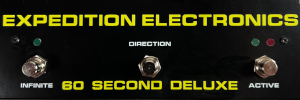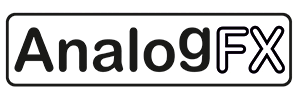
Showing posts sorted by date for query Amos Gaynes. Sort by relevance Show all posts
Showing posts sorted by date for query Amos Gaynes. Sort by relevance Show all posts
Friday, January 24, 2014
Moog Sub 37 Paraphonic Synthesizer NAMM 2014 Demonstration
Published on Jan 24, 2014 DV247 TV·362 videos
"The Moog Sub 37 Paraphonic Synthesizer draws on the success of the Sub Phatty and adds all the features that users have requested. in this video, the Sub 37's designer Amos Gaynes takes us through the features and applications and with its fat organic tone, shows us why he calls it a living instrument.
For more details, please check our product page and order yours today:
http://www.dv247.com/keyboards-and-mi..."
Wednesday, January 15, 2014
New MOOG SUB 37 Paraphonic Polyphonic Synth Coming to NAMM?
 Click the pic for the full size shot.
Click the pic for the full size shot. Some discussion on The MATRIXSYNTH Lounge and MATRIXSYNTH Facebook.
Update: [see Update4 below] for those not familiar with Paraphonic synths, a definition via wikipedia followed by a couple of notes:
Sunday, January 05, 2014
CrackBerry Live Moog synthesizer coming to BlackBerry 10780 with Amos Gaynes
Published on Jan 5, 2014 letajeffryes0gm25452·1,453 videos
Video from back in 2013, but just went up today. Animoog for Blackberry was released back in May of 2013:
Moog Releases Animoog For BlackBerry
Animoog for BlackBerry Z10 Promo Video
Friday, March 29, 2013
Amos Gaynes of Moog Music Featured on Engadget

Thought this was pretty cool. Moog Music's Amos Gaynes is featured on Engadget here. The interview is focused on tech gadgets rather than synths, but there is a nice pic of the Little Phatty on the bench. It's great to see Moog and Amos featured on a site more dedicated to gadgets in general than synths. It's great exposure for our world.

Friday, February 22, 2013
Looping EG Fun on The Moog Sub Phatty

controlvoltage is Amos Gaynes of Moog Music.
"first preset created after implementing looping envelopes.
square LFO is modulating wave shape, looping EG is modulating filter
big soft chords from osc1&2 interval plus sub"
Moog Sub Phatty's on eBay
Friday, February 01, 2013
MATRIXSYNTH NAMM 2013: Moog Music Booth & Sub Phatty Performance
matrixsynth·252 videos
http://www.moogmusic.com
A quick performance demo of the Moog Sub Phatty by Amos Gaynes. Let this one evolve. I think Amos was trying to put me in a trance and it worked. I could have kept listening forever. The Sub Phatty sounds great - substantial, massive and raw, and of course Amos rocks. Below you'll find a ton of pics including the 50th Anniversary Gold Voyager and the Aluminum Voyager. They both looked pretty incredible in person. I definitely like the gold one more in person than pics, fingerprints and all. The white Moogs look very sharp in person as well. If you scroll down you'll find a little non-Moog surprise. I asked Amos about it and he said it was from his friend who makes it. I thought that was pretty cool.
Monday, January 28, 2013
Moog Receives Outstanding Technical Achievement Awards for Minitaur and Animoog During TEC Foundation Ceremony at 2013 NAMM
You saw the nomination here, and the Minitaur award here. The following is the official press release:
"ANAHEIM, CA – January 28, 2012 - Moog Music has announced that it has won two Outstanding Technical Achievement awards from the TEC (Technical Excellence & Creativity) Foundation in recognition of its Minitaur analog bass synthesizer and Animoog polyphonic software synth, both launched in 2012. Mike Adams, CEO/President; Cyril Lance, Chief Engineer, Amos Gaynes, Product Development Specialist and Trent Thompson, Product Marketing Manager of Moog Music were all on hand to accept the award during a special recognition ceremony held at the 2013 NAMM in Anaheim, CA on Friday evening.
"The TEC Foundation Award recognizes the music industry's most outstanding products. We are honored to bring home two TEC Awards this year,” commented Mike Adams. “Our development of the Minitaur and the Animoog was a tremendous team effort led by our engineers and the direct result of carefully listening by our marketing department to the needs of our customers who use these tools each day."
Minitaur: Analog Bass Synthesizer
The Moog Minitaur, which won the "Musical Instrument Technology" category, is a powerful, compact analog bass synthesizer that features a classic one knob per function design. It is the first instrument in Moog's Taurus family that does not have foot pedals. At only 8.5" x 5.25" and less than 3lbs, the Minitaur puts legendary analog Moog bass into a package designed to fit seamlessly into today's performance and production environments.
 Animoog: Expressive, Captivating and Sonically Immersive
Animoog: Expressive, Captivating and Sonically Immersive
Animoog, which captured a TEC Award in the new "Audio Apps for Smartphones & Tablets" category, is powered by Moog’s new Anisotropic Synth Engine (ASE) and is the first professional polyphonic synthesizer designed for the IOS. Animoog captures the vast sonic vocabulary of Moog synthesizers and applies it to the modern touch surface paradigm, enabling a user to quickly sculpt fluid and dynamic sounds that live, breathe, and evolve. Visually captivating and sonically immersive, Animoog brings IOS music production to the next level.
For more information about Minitaur or Animoog, visit http://www.moogmusic.com.
For more information about the TEC Foundation, visit http://www.tecfoundation.com.
Photo caption:
Moog Music’s Minitaur and Animoog.
About Moog Music:
Moog Music synthesizers and other electronic musical instruments are designed and lovingly handcrafted in the Moog factory in downtown Asheville, N.C. Moog Music and its customers carry on the legacy of Dr. Robert Moog, inventor of the Moog synthesizer and Founder of Moog Music Inc."
"ANAHEIM, CA – January 28, 2012 - Moog Music has announced that it has won two Outstanding Technical Achievement awards from the TEC (Technical Excellence & Creativity) Foundation in recognition of its Minitaur analog bass synthesizer and Animoog polyphonic software synth, both launched in 2012. Mike Adams, CEO/President; Cyril Lance, Chief Engineer, Amos Gaynes, Product Development Specialist and Trent Thompson, Product Marketing Manager of Moog Music were all on hand to accept the award during a special recognition ceremony held at the 2013 NAMM in Anaheim, CA on Friday evening.
"The TEC Foundation Award recognizes the music industry's most outstanding products. We are honored to bring home two TEC Awards this year,” commented Mike Adams. “Our development of the Minitaur and the Animoog was a tremendous team effort led by our engineers and the direct result of carefully listening by our marketing department to the needs of our customers who use these tools each day."
Minitaur: Analog Bass Synthesizer
The Moog Minitaur, which won the "Musical Instrument Technology" category, is a powerful, compact analog bass synthesizer that features a classic one knob per function design. It is the first instrument in Moog's Taurus family that does not have foot pedals. At only 8.5" x 5.25" and less than 3lbs, the Minitaur puts legendary analog Moog bass into a package designed to fit seamlessly into today's performance and production environments.
 Animoog: Expressive, Captivating and Sonically Immersive
Animoog: Expressive, Captivating and Sonically ImmersiveAnimoog, which captured a TEC Award in the new "Audio Apps for Smartphones & Tablets" category, is powered by Moog’s new Anisotropic Synth Engine (ASE) and is the first professional polyphonic synthesizer designed for the IOS. Animoog captures the vast sonic vocabulary of Moog synthesizers and applies it to the modern touch surface paradigm, enabling a user to quickly sculpt fluid and dynamic sounds that live, breathe, and evolve. Visually captivating and sonically immersive, Animoog brings IOS music production to the next level.
For more information about Minitaur or Animoog, visit http://www.moogmusic.com.
For more information about the TEC Foundation, visit http://www.tecfoundation.com.
Photo caption:
Moog Music’s Minitaur and Animoog.
About Moog Music:
Moog Music synthesizers and other electronic musical instruments are designed and lovingly handcrafted in the Moog factory in downtown Asheville, N.C. Moog Music and its customers carry on the legacy of Dr. Robert Moog, inventor of the Moog synthesizer and Founder of Moog Music Inc."
Saturday, January 26, 2013
Moog Sub Phatty Direct Audio Demo by Amos Gaynes via Switched On
Moog Sub Phatty demo by Amos Gaynes|NAMM 2013|Switched On Demos (Direct Audio!)
Published on Jan 26, 2013 Switched On·37 videos
"Amos Gaynes from Moog Music gave me an outstanding walk through of the new Moog Sub Phatty. Amos is responsible for the
firmware design of the Sub Phatty, as well as the firmware on the reputable Moog Minitaur which debuted last year at NAMM 2012.
We're honored to have this authority on the matter explain some of the features and design principles in Moog's latest
synthesizer. They will retail for $999.00, will be shipping in March, and are American manufactured as Moog has always been!
The sound is quite huge and the build quality is solid. It retains the classic sound you would want in a Moog synth, but is also ventures into a wider
palette of sonic possibility.
Switched On is store front and online store based in Austin, TX.
Switched On buys, sells, repairs and restores all manners of musical electronics...new, used, and vintage.
Switched On also organizes events and offers resources to enhance the learning and creativity around electronic art forms.
Online Store:
www.switchedonaustin.com
Updates on events and new inventory:
www.facebook.com/switchedonaustinTwitter Handle: @SwitchedOnTX
www.switchedonaustin.com"
Published on Jan 26, 2013 Switched On·37 videos
"Amos Gaynes from Moog Music gave me an outstanding walk through of the new Moog Sub Phatty. Amos is responsible for the
firmware design of the Sub Phatty, as well as the firmware on the reputable Moog Minitaur which debuted last year at NAMM 2012.
We're honored to have this authority on the matter explain some of the features and design principles in Moog's latest
synthesizer. They will retail for $999.00, will be shipping in March, and are American manufactured as Moog has always been!
The sound is quite huge and the build quality is solid. It retains the classic sound you would want in a Moog synth, but is also ventures into a wider
palette of sonic possibility.
Switched On is store front and online store based in Austin, TX.
Switched On buys, sells, repairs and restores all manners of musical electronics...new, used, and vintage.
Switched On also organizes events and offers resources to enhance the learning and creativity around electronic art forms.
Online Store:
www.switchedonaustin.com
Updates on events and new inventory:
www.facebook.com/switchedonaustinTwitter Handle: @SwitchedOnTX
www.switchedonaustin.com"
Thursday, November 01, 2012
Moog Minitaur Goes Up to C5, Not C4
If you recall from my Moog Minitaur review (now updated), I stated that the Minitaur could play up to middle C, or note 72 / C4. This is also noted in the Minitaur manual. Well, it turns out MIDI note 72 is actually C5, an octave higher than middle C4 which is note 60.
John Bowen of John Bowen Synth Design and the Solaris caught this.
"I was reading your review of the Minitaur, and wanted to comment about the statement that Middle C (C4) is note #72. I've always used 60 as the value for C4.
If you check the info here: http://home.roadrunner.com/~
There are 128 possible notes on a MIDI device, numbered 0 to 127 (where Middle C is note number 60)."
He did find the following in the Logic Pro 9 user manual site regarding differences between Yamaha and Roland:
"Display Middle C As pop-up menu: This pop-up menu affects the description of notes in the editors. The bottom C on a five-octave keyboard (note # 36) is labeled C1, and middle C (note # 60) is labeled C3. According to this standard, the lowest MIDI note (note # 0) is called C–2. This is the official standard used by most manufacturers. Use of the C3 (Yamaha) setting will set Logic Pro to this standard mode. If you select the C4 (Roland) setting, the bottom C on a five-octave keyboard is labeled C2, and middle C is labeled as C4. In this standard, the lowest MIDI note is C–1."
So in this case Yamaha sees middle C as C3 and Roland sees middle C as C4, but both see C4 as MIDI note 60. If the Minitaur goes up to MIDI note 72, then that would be C5 and not C4.
John checked with Amos Gaynes of Moog Music and he verified it was his understanding that Middle C is note 60 and is C4, making MIDI Note 72 C5.
So there you have it. The Minitaur actually goes up to C5, one octave past middle C.
John Bowen of John Bowen Synth Design and the Solaris caught this.
"I was reading your review of the Minitaur, and wanted to comment about the statement that Middle C (C4) is note #72. I've always used 60 as the value for C4.
If you check the info here: http://home.roadrunner.com/~
There are 128 possible notes on a MIDI device, numbered 0 to 127 (where Middle C is note number 60)."
He did find the following in the Logic Pro 9 user manual site regarding differences between Yamaha and Roland:
"Display Middle C As pop-up menu: This pop-up menu affects the description of notes in the editors. The bottom C on a five-octave keyboard (note # 36) is labeled C1, and middle C (note # 60) is labeled C3. According to this standard, the lowest MIDI note (note # 0) is called C–2. This is the official standard used by most manufacturers. Use of the C3 (Yamaha) setting will set Logic Pro to this standard mode. If you select the C4 (Roland) setting, the bottom C on a five-octave keyboard is labeled C2, and middle C is labeled as C4. In this standard, the lowest MIDI note is C–1."
So in this case Yamaha sees middle C as C3 and Roland sees middle C as C4, but both see C4 as MIDI note 60. If the Minitaur goes up to MIDI note 72, then that would be C5 and not C4.
John checked with Amos Gaynes of Moog Music and he verified it was his understanding that Middle C is note 60 and is C4, making MIDI Note 72 C5.
So there you have it. The Minitaur actually goes up to C5, one octave past middle C.
Sunday, October 21, 2012
Exclusive Moog Minitaur Review - All the Bass & More for Less
This is a MATRIXSYNTH review...
A brand new Moog Minitaur will set you back $599, a Slim Phatty, $795, an RME Voyager, $2695. So how does the Minitaur sound compared to its siblings? Pretty darn incredible.
For this review I had access to both a Minimoog Voyager and a vintage Minimoog Model D for comparison, and the Minitaur more than held its own. Actually it was capable of sounding identical to the Voyager with roughly equivalent settings. The Model D, whether due to age or physical design, has a brighter, fizzier, more unstable characteristic to it compared to both. It's kind of like the original Minimoog has a wild beast inside it while the Voyager and Minitaur have managed to keep that beast under control. I used to think of an analogy where the Model D sounds like it has a Tasmanian Devil inside it, while the Voyager has Darth Vader. Well, the Minitaur adds a massive fat bull. All three are extremely powerful sounding synths. The bass the Minitaur produces is as full as it gets and the filter gets wide open. It was a bit shocking when I first heard it. The Minitaur might be slimmed down in price, but sonically it has all the fat you will ever need.
As the Voyager sounded closest to the Minitaur, I primarily focused on it for comparison. For the most part I could get the Minitaur to sound identical, but there were subtle differences. An interesting thing I noticed was that the filter on the Minitaur seemed to open more than the Voyager, but then I realized that on the Voyager the filter opens up more if you apply the envelope to it. Once I adjusted the envelope on the Voyager, they sounded nearly identical. The saw waves were identical and the pulse waves varied a little, but I believe this was likely due to additional pulse width settings on the Voyager that the Minitaur does not have. I found myself spending more time attempting to get the Voyager to sound like the Minitaur vs. the other way around. This was clearly due to the extra parameters on the Voyager, and it reminded me that sometimes less can be more. With pulse waves, the Minitaur sounded a little more rounded, smooth and fuller. In many cases where I couldn't sonically hear a difference, I could feel it. A funny side note is I have an overhead lamp in the studio I did my testing in. The lamp has a metal hood over a small glass dome for the bulb enclosure that rattles with significant bass. It rarely happens but I noticed it happening quite a bit with the Minitaur. I decided to take the Minitaur, Voyager and Model D to town with a rattle test. The Minitaur won. It consistently produced the most intense lamp rattle. :) This is not too surprising considering Moog's reputation for bass, and that the Minitaur is based on the Moog Taurus 3 bass pedals, which in turn was based on the original Taurus I released back in 1975 (note the Taurus II unlike the I & 3 was based on the Moog Rogue - this is significant, and I'll comment on this in the summary). It's worth noting that although there are other dedicated bass synthesizers out there, there are essentially two types - TB-303 emulators and thundering bass pedals. The Minitaur of course is based on the latter, and few synths sound as full. The Novation BassStation keyboard which is also analog, for example, was geared more towards TB-303 emulation and does not really compare to the Minitaur.
Before we get into specs and finally the summary, there are a few things you need to know off the bat regarding the Minitaur:
A brand new Moog Minitaur will set you back $599, a Slim Phatty, $795, an RME Voyager, $2695. So how does the Minitaur sound compared to its siblings? Pretty darn incredible.
For this review I had access to both a Minimoog Voyager and a vintage Minimoog Model D for comparison, and the Minitaur more than held its own. Actually it was capable of sounding identical to the Voyager with roughly equivalent settings. The Model D, whether due to age or physical design, has a brighter, fizzier, more unstable characteristic to it compared to both. It's kind of like the original Minimoog has a wild beast inside it while the Voyager and Minitaur have managed to keep that beast under control. I used to think of an analogy where the Model D sounds like it has a Tasmanian Devil inside it, while the Voyager has Darth Vader. Well, the Minitaur adds a massive fat bull. All three are extremely powerful sounding synths. The bass the Minitaur produces is as full as it gets and the filter gets wide open. It was a bit shocking when I first heard it. The Minitaur might be slimmed down in price, but sonically it has all the fat you will ever need.
As the Voyager sounded closest to the Minitaur, I primarily focused on it for comparison. For the most part I could get the Minitaur to sound identical, but there were subtle differences. An interesting thing I noticed was that the filter on the Minitaur seemed to open more than the Voyager, but then I realized that on the Voyager the filter opens up more if you apply the envelope to it. Once I adjusted the envelope on the Voyager, they sounded nearly identical. The saw waves were identical and the pulse waves varied a little, but I believe this was likely due to additional pulse width settings on the Voyager that the Minitaur does not have. I found myself spending more time attempting to get the Voyager to sound like the Minitaur vs. the other way around. This was clearly due to the extra parameters on the Voyager, and it reminded me that sometimes less can be more. With pulse waves, the Minitaur sounded a little more rounded, smooth and fuller. In many cases where I couldn't sonically hear a difference, I could feel it. A funny side note is I have an overhead lamp in the studio I did my testing in. The lamp has a metal hood over a small glass dome for the bulb enclosure that rattles with significant bass. It rarely happens but I noticed it happening quite a bit with the Minitaur. I decided to take the Minitaur, Voyager and Model D to town with a rattle test. The Minitaur won. It consistently produced the most intense lamp rattle. :) This is not too surprising considering Moog's reputation for bass, and that the Minitaur is based on the Moog Taurus 3 bass pedals, which in turn was based on the original Taurus I released back in 1975 (note the Taurus II unlike the I & 3 was based on the Moog Rogue - this is significant, and I'll comment on this in the summary). It's worth noting that although there are other dedicated bass synthesizers out there, there are essentially two types - TB-303 emulators and thundering bass pedals. The Minitaur of course is based on the latter, and few synths sound as full. The Novation BassStation keyboard which is also analog, for example, was geared more towards TB-303 emulation and does not really compare to the Minitaur.
Before we get into specs and finally the summary, there are a few things you need to know off the bat regarding the Minitaur:
Tuesday, October 16, 2012
Moog Announces Revolution 2 of its Minitaur Analog Bass Synthesizer
Published on Oct 16, 2012 by MoogMusicInc
100 Presets & new CV modulation destinations! Full list of the desinations below.
"Moog Product Development Specialist, Amos Gaynes, introduces Minitaur Revolution 2. REV 2 adds localy stored presets, assignable CV, CV to Midi conversion as well as an update to the Minitaur editor/librarian.
Minitaur REV 2 owners can now create up to 100 presets and store them directly within their Minitaur. Presets are managed from within the free Editor/Librarian software and can be conveniently recalled from the Minitaur's front panel controls.
Also in REV 2, a new operational mode for the Decay/Release knob provides users independent control of Decay and Release times from Minitaur's front panel. Users can easily switch between this new mode and Minitaur's legacy mode from the front panel.
In addition, Minitaur's CV and Gate inputs are now assignable from the Minitaur Editor/Librarian software. The Pitch and Mod CV inputs can be routed to any function, while the Gate input can be routed to functions with on/off behavior. REV 2 also enables Minitaur to effectively function as an intuitive CV to MIDI converter.
Learn more about Minitaur here:
http://www.moogmusic.com/products/taurus/minitaur
OS V2 ads the following modulation destinations for the Pitch and Volume CV inputs (think interfacing with your modular here): Volume Attack, Volume Decay, Volume Sustain, Volume Release, Filter Attack, Filter Decay, Filter Sustain, Filter Release, VCO 1 Level, VCO 2 Level, VCO 1 Wave, VCO 2 Wave, VCO 2 Frequency, VCO 2 Beat, VCO Reset On/Off, Filter Cutoff, Filter Resonance, Filter EG, Amount, Filter KB Tracking, Filter EG Velocity Sens., Volume EG Velocity Sens., Trigger Mode, Release On/Off, Key Priority, LFO Rate, LFO Clock Division, LFO MIDI Sync On/Off, LFO Key Trigger On/Off, VCF LFO Amount, VCO LFO Amount, Pitch Bend Up Amount, Pitch Bend Down Amount, Glid On/Off, Legato Glide On/Off, Glide Rate, VCA Level, External Input Level, Mod Wheel.
"Moog Announces Revolution 2 of its Minitaur Analog Bass Synthesizer
Free Update to Analog Bass Synthesizer Unlocks a Host of Performance Features and Implements Several User Requested Updates
ASHEVILLE, NC - October 16, 2012 - Moog Music announced the release of Revolution 2 for its Minitaur Analog Bass Synthesizer, which was recently nominated for a 2013 TEC Award in the 'Musical Instrument (Hardware)' category. REV 2, which is a free update for Minitaur owners, unlocks a host of new performance features (watch the video here) and implements a number of user requested updates to Minitaur and the free Minitaur Editor/Librarian.
Among these updated features, Minitaur REV 2 owners can now create up to 100 presets and store them directly within their Minitaur. Presets are managed from within the free Editor/Librarian software and can be conveniently recalled from the Minitaur’s front panel controls.
Also in REV 2, a new operational mode for the Decay/Release knob provides users independent control of Decay and Release times from Minitaur’s front panel. Users can easily switch between this new mode and Minitaur’s legacy mode from the front panel.
In addition, Minitaur’s CV and Gate inputs are now assignable from the Minitaur Editor/Librarian software. The Pitch and Mod CV inputs can be routed to any function, while the Gate input can be routed to functions with on/off behavior. REV 2 also enables Minitaur to effectively function as an intuitive CV to MIDI converter.
Minitaur: Analog Bass Synthesizer
The Moog Minitaur is a powerful, compact analog bass synthesizer that features a classic one knob per function design. At only 8.5" x 5.25" and less than 3lbs, the Minitaur puts legendary analog Moog bass into a package designed to fit seamlessly into today's performance and production environments.
To download REV 2 firmware, and an updated manual go to:
http://www.moogmusic.com/products/taurus/minitaur#downloads-tab
NOTE: This Firmware update requires the Minitaur REV 2 Editor/Librarian.
To receive the Minitaur REV 2 Editor/Librarian, register your Minitaur at
http://www.moogmusic.com/register
Currently registered Minitaur owners will receive an email from Moog with download instructions.
Links:
Web Page: http://moogmusic.com/products/taurus/minitaur
Sounds: http://moogmusic.com/products/taurus/minitaur#sound-tab
Videos: http://www.moogmusic.com/sight-and-sound/product_demo/minitaur-rev-2 [embed above]
Monday, August 13, 2012
The Power of Modular Synthesis - Moogfest 2010
YouTube Published on Aug 13, 2012 by moogfoundation
"At Moogfest (www.moogfest.com) 2012, Erik Norlander (synthesist), August Worley (former engineer, Moog Music, Inc.) and Amos Gaynes (New Product Specialist, Moog Music, Inc) explore the realm of modular synthesis using Erik's 22 oscillator Wall of Doom modular Moog synthesizer to explain the very roots of Bob Moog's legacy.
To learn more about the Bob Moog Foundation, go to www.bobmoogfoundation.org
To purchase Erik's CDs and "feed the modular", go to www.eriknorlander.com.
Many thanks to Flying Pig Studio (http://www.flyingpigstudio.com) for donating their time and talents to capture the footage you see here."
Follow-up to Amos Gaynes and the Power of Modular Synthesis - Moogfest 2010
Thursday, August 09, 2012
Amos Gaynes and the Power of Modular Synthesis - Moogfest 2010
YouTube Published on Aug 7, 2012 by moogfoundation
"Amos Gaynes, New Product Specialist at Moog Music, Inc., explains that now is the best time in history to use modular synthesis. This talk was part of a larger panel on modular synthesis presented at Moogfest 2010 in Asheville, NC. The panel, conceptualized by the Bob Moog Foundation, also featured Erik Norlander and August Worley and highlighted Erik's 22 oscillator modular Moog synthesizer, affectionately known as the Wall of Doom (seen in the background).
Learn more about the Bob Moog Foundation at www.bobmoogfoundation.org
Learn more about Moogfest at www.moogfest.com
Learn more about Moog Music at www.moogmusic.com
Many thanks to Flying Pig Studio (www.flyingpigstudio.com) for their time and talents to provide the footage for this video."
Thursday, June 07, 2012
MINITAUR + ABLETON LIVE PART 3: Minitaur Editor Librarian
YouTube Published on Jun 7, 2012 by MoogMusicInc
All parts here.
"In the final part of this three part series, Moog Product Development Specialist, Amos Gaynes shows you how to use the under the hood features of the Minitaur Editor Librarian. Learn how to utilize even more features of your Minitaur for a totally custom experience.
Learn more about the Minitaur at:
www.moogmusic.com/products/taurus/minitaur
Be sure to register your Minitaur to receive your free copy of the Minitaur Editor Librarian at:
www.moogmusic.com/register"
Friday, May 04, 2012
Moby with Amos Gaynes of Moog Music
Note: Auction links are affiliate links for which the site may be compensated.

via Animoog on Facebook
"Moby explores Animoog with Moog Development Specialist Amos Gaynes during Moogfest 2011."
iTunes: Moog Music Inc.
iPads on eBay

via Animoog on Facebook
"Moby explores Animoog with Moog Development Specialist Amos Gaynes during Moogfest 2011."
iTunes: Moog Music Inc.
iPads on eBay
Thursday, May 03, 2012
MINITAUR + ABLETON LIVE PART 2: Minitaur as External Filter
YouTube Published on May 3, 2012 by MoogMusicInc
"In part two of this three part series, Moog Product Development Specialist, Amos Gaynes shows you how to integrate the Minitaur Analog Bass Synthesizer into Ableton Live. Learn how to use your Minitaur as an external filter, manipulate sounds in real time, and create a sequenced gate effect.
Learn more about the Minitaur at:
www.moogmusic.com/products/taurus/minitaur
Register your Minitaur at:
www.moogmusic.com/register"
Also added to Part 1 here.
Thursday, April 19, 2012
Moog Taurus 3 Cover Unboxing
YouTube ublished on Apr 19, 2012 by fredturd
"Music by Amos Gaynes [of Moog Music]"
Friday, April 06, 2012
MINITAUR + ABLETON LIVE Tutorials
MINITAUR + ABLETON LIVE PART 1: The Basics
YouTube Uploaded by MoogMusicInc on Apr 6, 2012
"In part one of this three part series, Moog Product Development Specialist, Amos Gaynes shows you how to integrate the Minitaur Analog Bass Synthesizer into Ableton Live. Learn how to connect your Minitaur using a multi-channel audio interface, setup your session, and produce a simple track. Part one covers MIDI sequencing, filter automation, using the Minitaur as an external instrument, using the Minitaur Editor to load presets, and how to manually dial in basic sounds.
Learn more about the Minitaur at:
www.moogmusic.com/products/taurus/minitaur
Register your Minitaur at:
www.moogmusic.com/register"
MINITAUR + ABLETON LIVE PART 2: Minitaur as External Filter
YouTube Published on May 3, 2012 by MoogMusicInc
"In part two of this three part series, Moog Product Development Specialist, Amos Gaynes shows you how to integrate the Minitaur Analog Bass Synthesizer into Ableton Live. Learn how to use your Minitaur as an external filter, manipulate sounds in real time, and create a sequenced gate effect."
MINITAUR + ABLETON LIVE PART 3: Minitaur Editor Librarian
YouTube Published on Jun 7, 2012 by MoogMusicInc
"In the final part of this three part series, Moog Product Development Specialist, Amos Gaynes shows you how to use the under the hood features of the Minitaur Editor Librarian. Learn how to utilize even more features of your Minitaur for a totally custom experience.
Learn more about the Minitaur at:
www.moogmusic.com/products/taurus/minitaur
Register your Minitaur at:
www.moogmusic.com/register"
YouTube Uploaded by MoogMusicInc on Apr 6, 2012
"In part one of this three part series, Moog Product Development Specialist, Amos Gaynes shows you how to integrate the Minitaur Analog Bass Synthesizer into Ableton Live. Learn how to connect your Minitaur using a multi-channel audio interface, setup your session, and produce a simple track. Part one covers MIDI sequencing, filter automation, using the Minitaur as an external instrument, using the Minitaur Editor to load presets, and how to manually dial in basic sounds.
Learn more about the Minitaur at:
www.moogmusic.com/products/taurus/minitaur
Register your Minitaur at:
www.moogmusic.com/register"
MINITAUR + ABLETON LIVE PART 2: Minitaur as External Filter
YouTube Published on May 3, 2012 by MoogMusicInc
"In part two of this three part series, Moog Product Development Specialist, Amos Gaynes shows you how to integrate the Minitaur Analog Bass Synthesizer into Ableton Live. Learn how to use your Minitaur as an external filter, manipulate sounds in real time, and create a sequenced gate effect."
MINITAUR + ABLETON LIVE PART 3: Minitaur Editor Librarian
YouTube Published on Jun 7, 2012 by MoogMusicInc
"In the final part of this three part series, Moog Product Development Specialist, Amos Gaynes shows you how to use the under the hood features of the Minitaur Editor Librarian. Learn how to utilize even more features of your Minitaur for a totally custom experience.
Learn more about the Minitaur at:
www.moogmusic.com/products/taurus/minitaur
Register your Minitaur at:
www.moogmusic.com/register"
Monday, October 24, 2011
Moogfest Panels Feature Mavericks, Legends and Pioneers
"Moogfest History and Technical Panels Draw on Deep Legacy and Industry Connections
The Bob Moog Foundation is bringing together top minds in history, technology and education for this year’s history and technical panels. Experts, ranging from Bob’s colleagues in the seminal days of synthesis to the more contemporary sound sculptors of today, are coming from around the country to share their ideas and vast experiences. The Bob Moog Foundation will be responsible for the historical content at Moogfest, including items from Dr. Bob’s Archives such as rarely seen vintage photographs and historic audio clips from recently restored reel-to-reel tapes.
All panels, demonstrations, and workshops will take place between Noon and 6:30 PM EST at the Moogaplex, located at the Haywood Park Hotel complex at 1 Battery Park Avenue in downtown Asheville, just a stone’s throw from many of the music venues. They are first come, first serve for those who bought either weekend passes or have a pass for that particular day.
Convergence – Hardware and Software Integration in the 21st Century & The Award of OMG-1 One-Of-A-Kind Synth (Friday, 3pm)

The One-Of-A-Kind OMG-1, designed by Eric Persing
The creation of electronic music has always relied on exploring all technologies available. In the modern context, that often means transcending the divide between the tactile experience of hardware devices and the ever-increasing capabilities of computers. An incredible panel of sonic explorers moderated by Spectrasonics’ founder Eric Persing will investigate the challenges of how electronic instruments can reach their ultimate potential through the convergence of multiple technologies.
During this panel, Persing will be awarding his one-of-a-kind OMG-1 synthesizer to the winner of the OMG-1 Contest, Torley Wong. You won’t want to miss this historical moment!
The Bob Moog Foundation is bringing together top minds in history, technology and education for this year’s history and technical panels. Experts, ranging from Bob’s colleagues in the seminal days of synthesis to the more contemporary sound sculptors of today, are coming from around the country to share their ideas and vast experiences. The Bob Moog Foundation will be responsible for the historical content at Moogfest, including items from Dr. Bob’s Archives such as rarely seen vintage photographs and historic audio clips from recently restored reel-to-reel tapes.
All panels, demonstrations, and workshops will take place between Noon and 6:30 PM EST at the Moogaplex, located at the Haywood Park Hotel complex at 1 Battery Park Avenue in downtown Asheville, just a stone’s throw from many of the music venues. They are first come, first serve for those who bought either weekend passes or have a pass for that particular day.
Convergence – Hardware and Software Integration in the 21st Century & The Award of OMG-1 One-Of-A-Kind Synth (Friday, 3pm)

The One-Of-A-Kind OMG-1, designed by Eric Persing
The creation of electronic music has always relied on exploring all technologies available. In the modern context, that often means transcending the divide between the tactile experience of hardware devices and the ever-increasing capabilities of computers. An incredible panel of sonic explorers moderated by Spectrasonics’ founder Eric Persing will investigate the challenges of how electronic instruments can reach their ultimate potential through the convergence of multiple technologies.
During this panel, Persing will be awarding his one-of-a-kind OMG-1 synthesizer to the winner of the OMG-1 Contest, Torley Wong. You won’t want to miss this historical moment!
Monday, January 31, 2011
PREVIOUS PAGE
NEXT PAGE
HOME
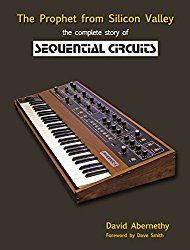
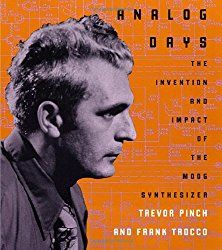
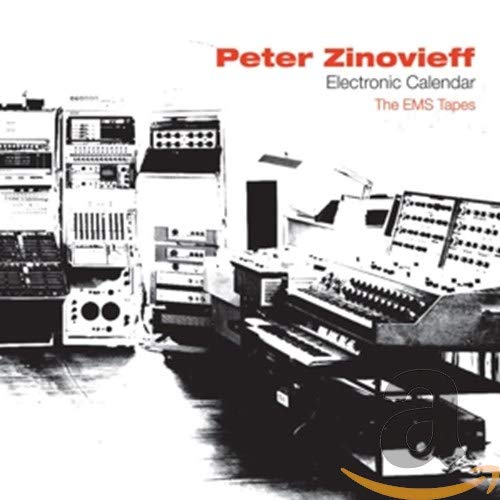
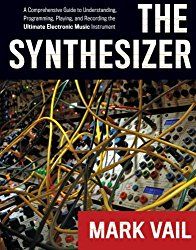
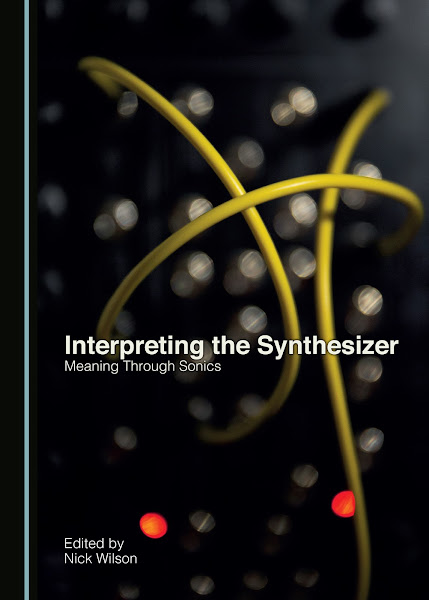
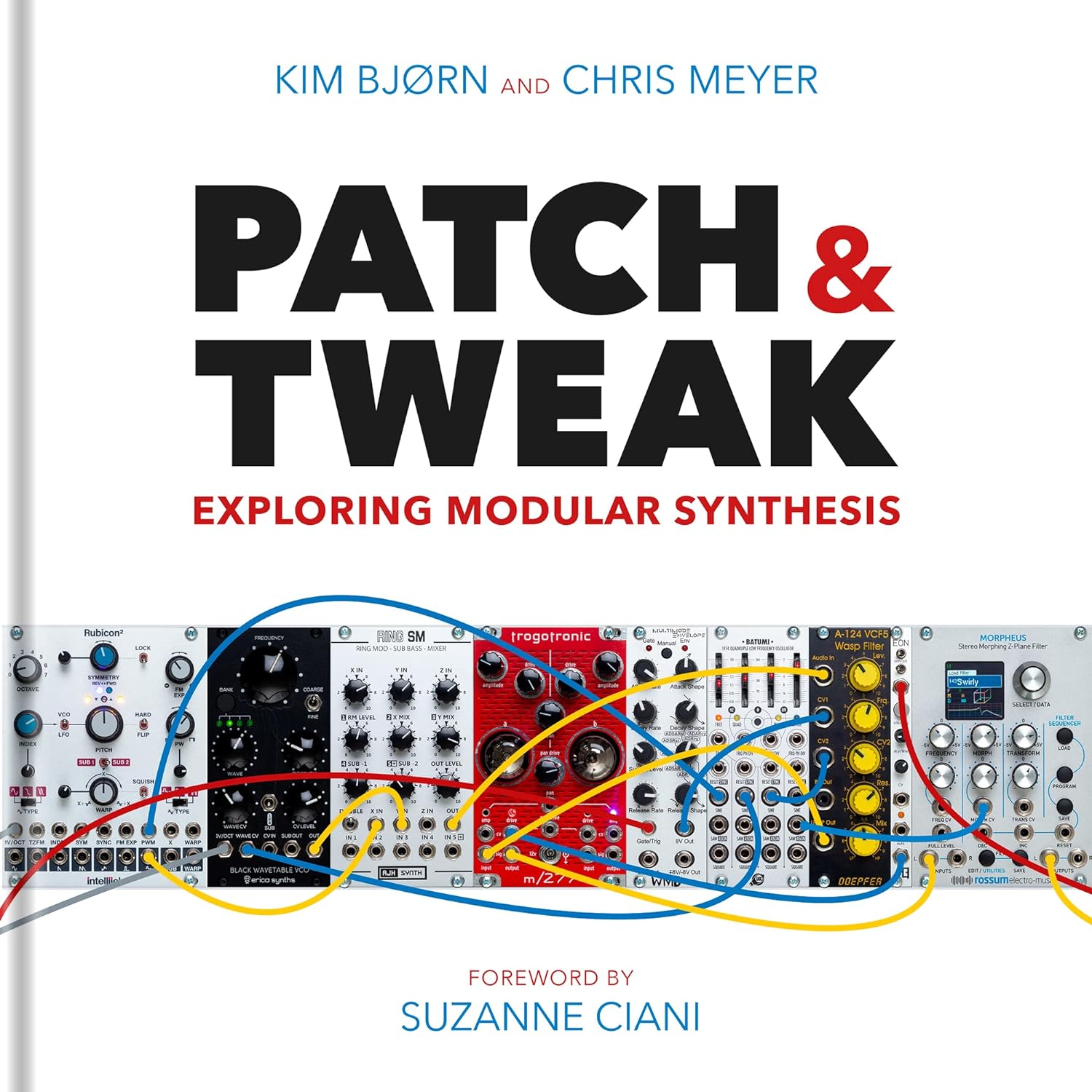
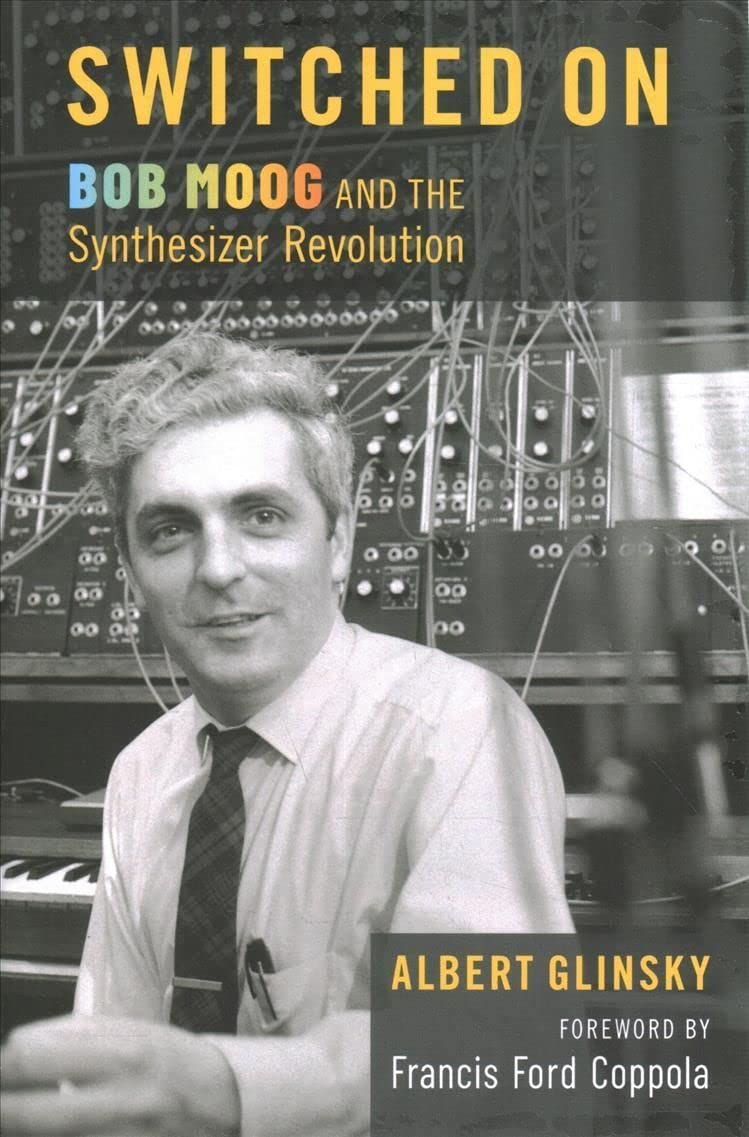
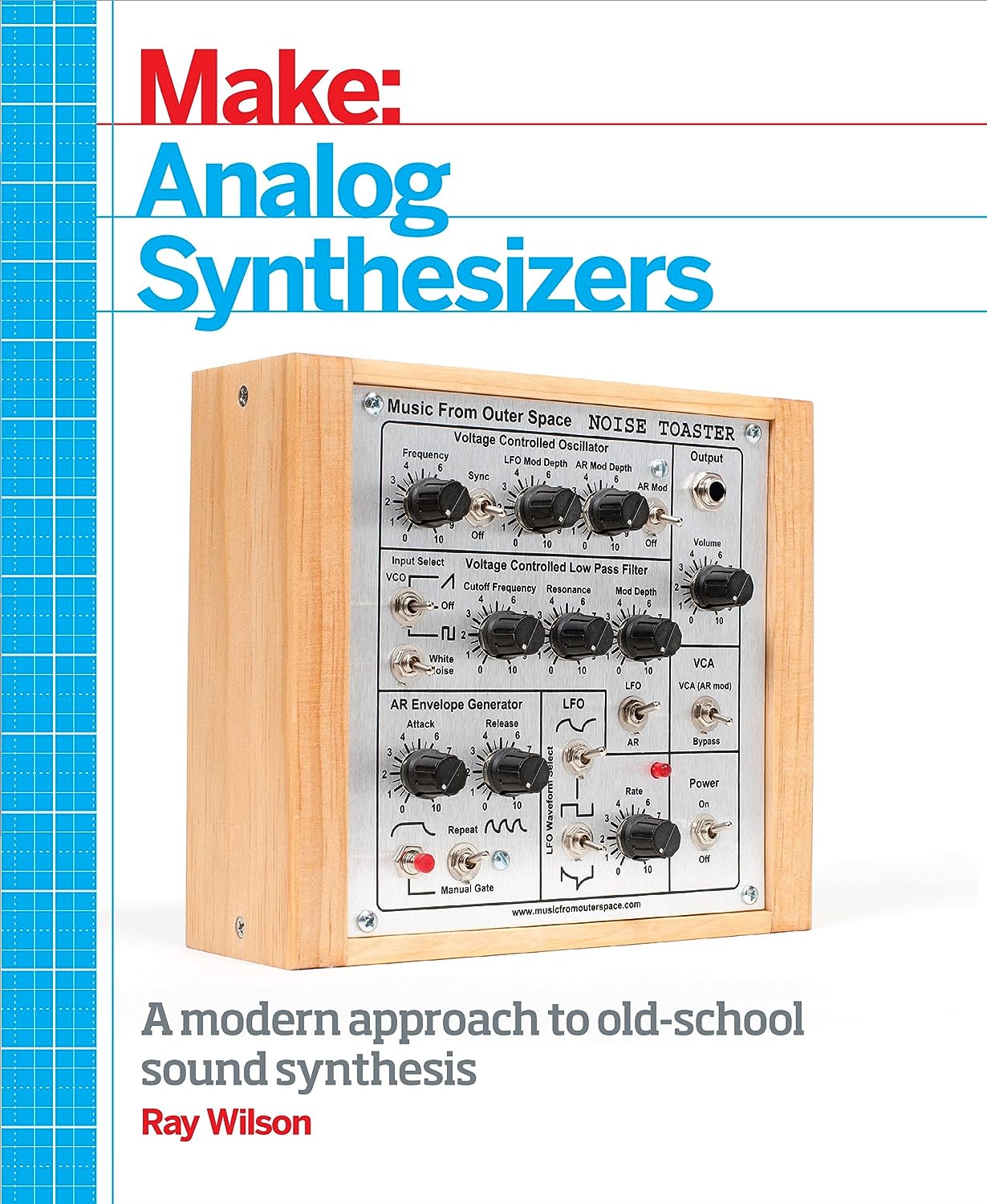
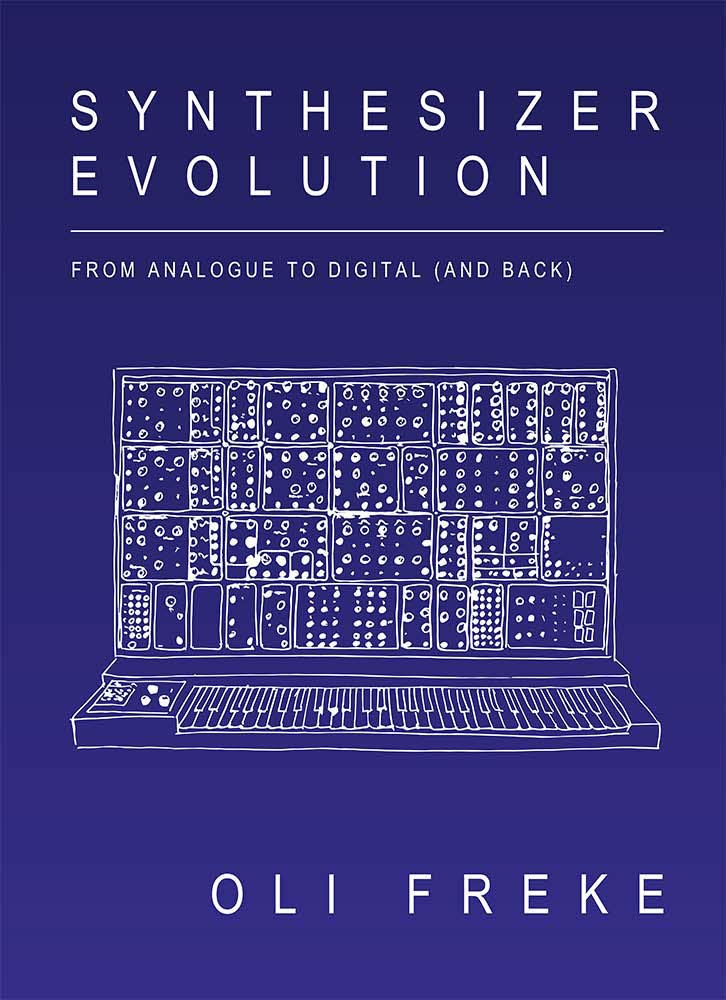
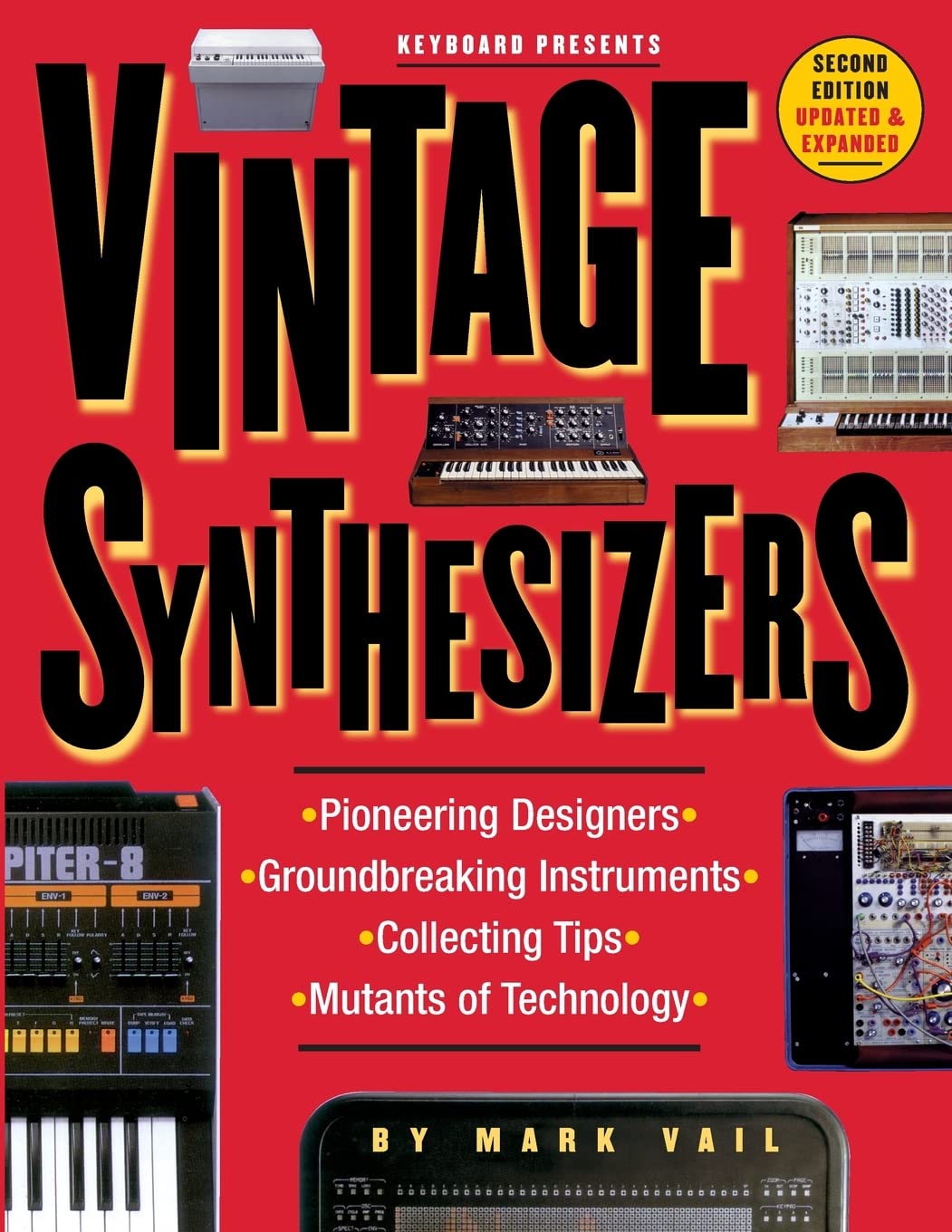
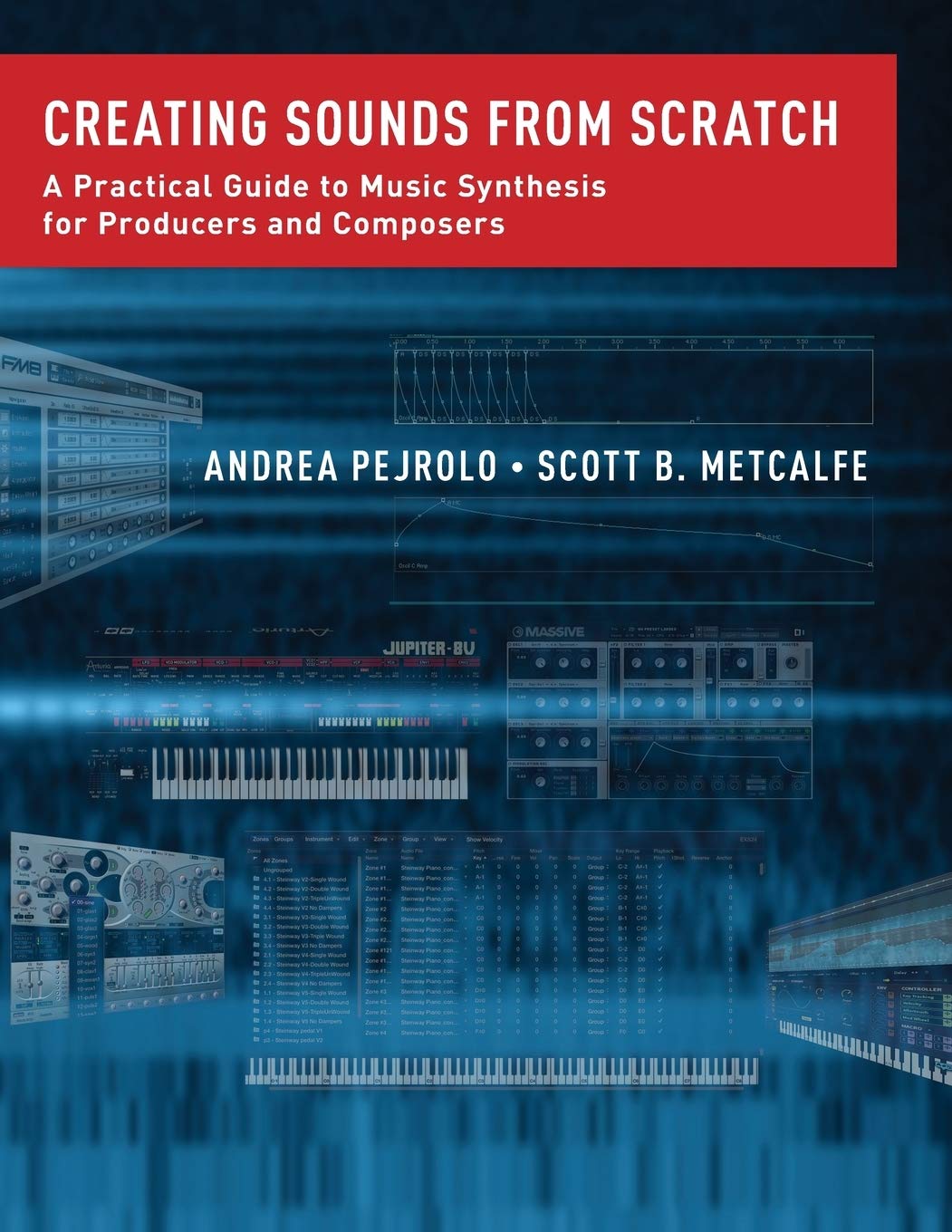
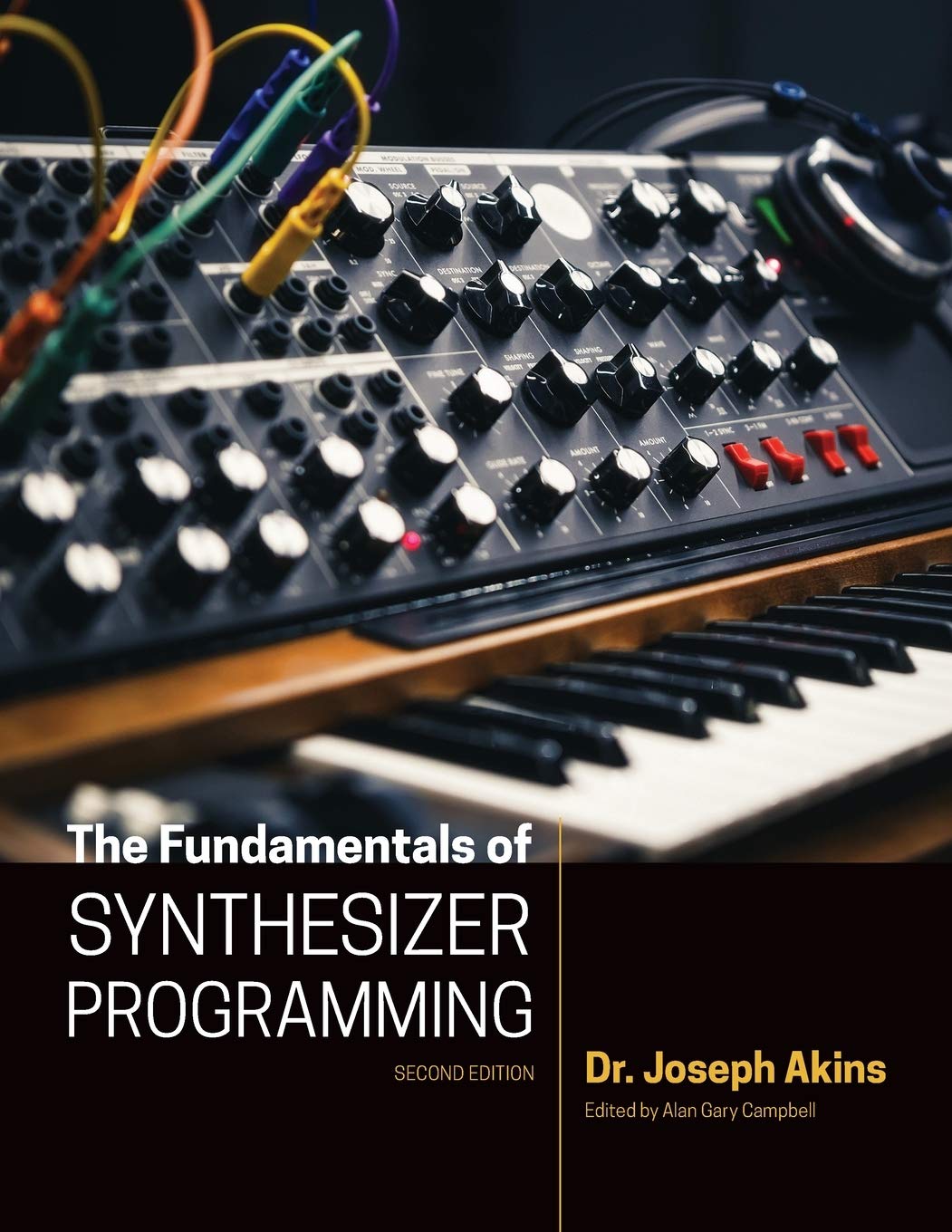
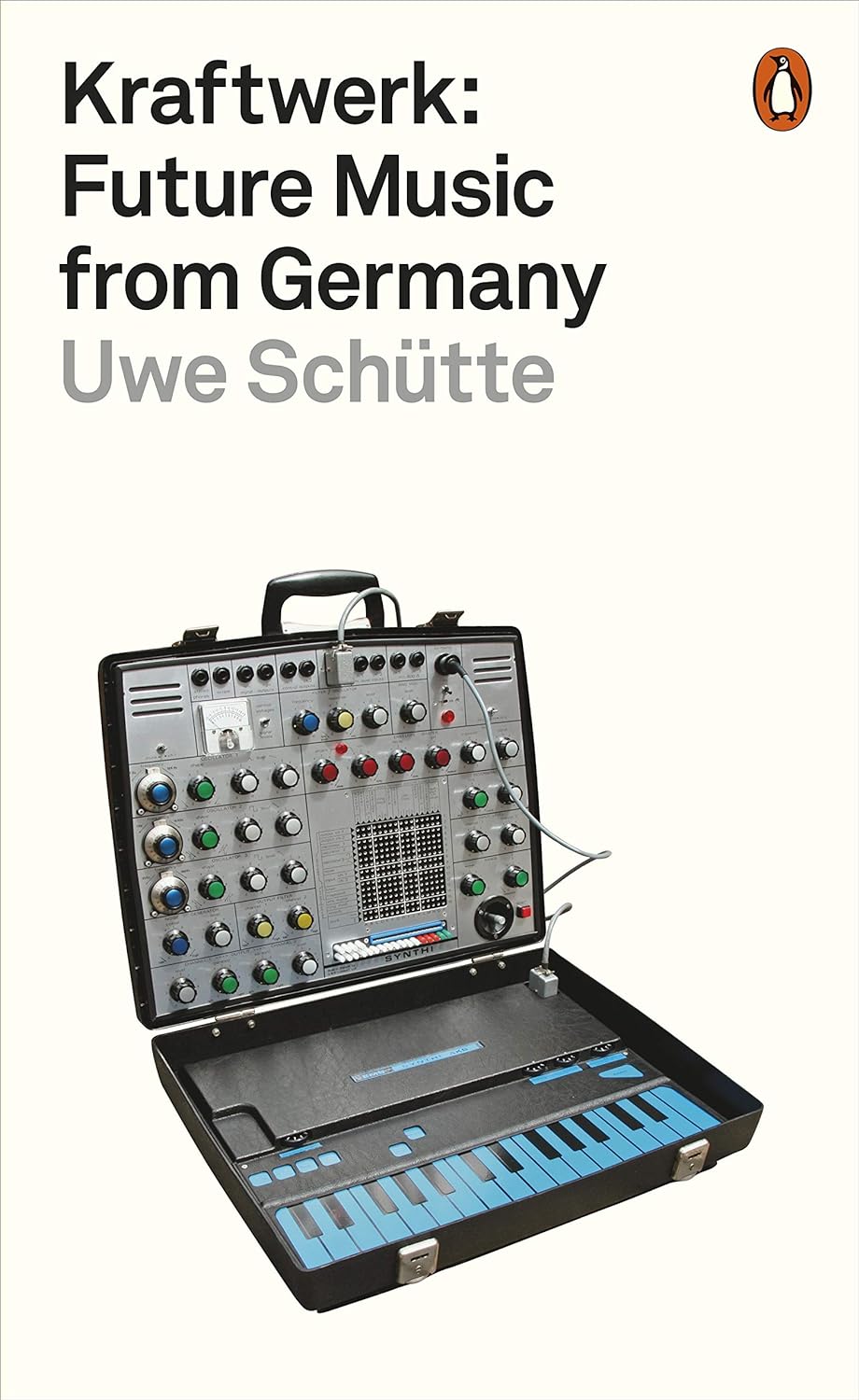
© Matrixsynth - All posts are presented here for informative, historical and educative purposes as applicable within fair use.
MATRIXSYNTH is supported by affiliate links that use cookies to track clickthroughs and sales. See the privacy policy for details.
MATRIXSYNTH - EVERYTHING SYNTH













© Matrixsynth - All posts are presented here for informative, historical and educative purposes as applicable within fair use.
MATRIXSYNTH is supported by affiliate links that use cookies to track clickthroughs and sales. See the privacy policy for details.
MATRIXSYNTH - EVERYTHING SYNTH





















